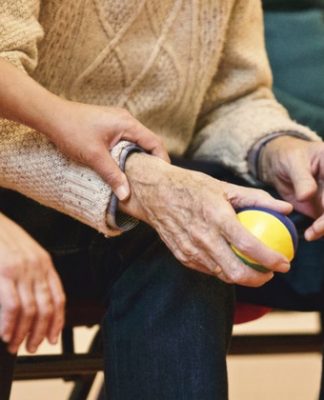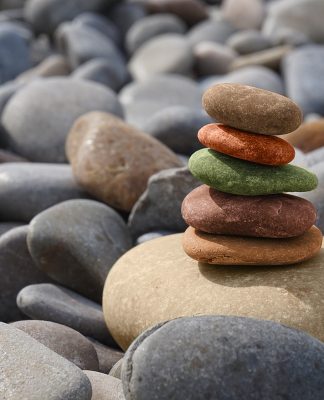The aim of anxiety is to help you pay attention and to provide you with energy. You may dislike the way it makes you feel, but that’s the point: As with all negative emotions, the primary way in which anxiety motivates you to take action involves your desire to rid yourself of its effects. When you are anxious about getting something done, for example, notice that once you have completed the task your anxiety disappears, at least until your attention is drawn to the next thing you have to do. In such cases, anxiety is like a niggling parent who continuously reminds you to do something and knows you’ll both be relieved when you deal with the situation.
The adaptive and motivational value of anxiety has often been obscured by negative perceptions of the emotion. Anxiety, in fact, can motivate you in positive ways, for example, by drawing your attention to something that is in your best interest to notice or take care of, or by facilitating learning and intellectual performance.[i] Nevertheless, for some people, and in certain situations, anxiety can be felt at a level that is experienced as very threatening. In this post, I will only explain the everyday anxiety we all experience.
Although anxiety is prominent in terms of something people experience, it is not considered to be one of the primary or core emotions. The dominant emotion that creates the feeling of anxiety is fear, which may account for why many people confuse the two concepts. Most importantly, whereas fear is a primary emotion, anxiety represents a blend of emotions in which fear is dominant.[ii] Fear is activated in response to an imminent threat from a known source that immediately leads to an urge to defend yourself.[iii] You would likely experience fear, for example, if while driving you suddenly see another car careening out of control toward you. In contrast to fear, anxiety is a response to an unknown threat or to something that is not specifically threatening.[iv] Distinguished from the imminent quality of fear, anxiety is a longer lasting state of nervousness and apprehension that puts you on alert to a future threat or to the possibility of danger, such as being vigilant while driving because you anticipate there are going to be careless drivers on the road.The commingling of other emotions, along with fear, makes anxiety a response to a vague, nonspecific threat, as opposed to a fear response where the source is known and avoidance of danger is required immediately.[v]
The blending of fear with other emotions produces the variety of ways in which anxiety is felt. These variations of anxiety are often the octane that motivate us to get things done or generally urge us to do something that will relieve us of its effects. Along with fear, the other emotions your brain may activate to produce anxiety may include, for example, distress, excitement, anger, disgust, and shame. Since the development of our emotional responses are subject to our culture and experience, what activates our anxiety can vary. Let’s take a look at some of the various flavors of anxiety and how you might experience them.
If you have anxiety about having many things to get done, or little time to do them, the anxiety you feel likely involves a coalescence of fear and distress. Generally, distress itself is felt as agitation, annoyance, or tension—a constant and unpleasant sensation that may arise from a variety of internal and external sources. When you are distressed, you are motivated to anticipate what’s going to go wrong and then try to solve the problem effectually.[vi]Feeling stressed or “stressed out” is the result of distress that has been activated in response to fear, and fear is very prominent in the mix.[vii]
Fear also comingles with the emotion of excitement. The blending of fear and excitement produces anxiety that makes it possible to experience the emotion as both positive and negative at the same time. You may have experienced that effect on an amusement park ride, while engaged in a challenging sport, or when you anticipated seeing someone who is a romantic interest. The comingling of fear and excitement may also produce an arousal and stimulation that can lead to an intense focus on a project or a sense that you are “in the zone.”
If you are grumpy and agitated, your unique blend of anxiety may involve anger combined with fear. As a result of this mix, people commonly experience agitation, an agitated depression, or an angry urgency—they become such a grouch in their motivation to do something. Since this anxiety results in highly focused attention on a task, interrupting them may trigger an eruption.
When your brain adds disgust to fear, the melding produces disgust anxiety. Disgust by itself is highly motivating. At a basic level, disgust is a rejection response to something that tastes bad or just doesn’t sit well. Disgust causes you to experience something as revolting or repulsive—wanting to expel or avoid it. This emotional response is designed to protect you by making you want to get rid of, or distance yourself from, whatever is offensive. In the case of disgust anxiety, you become anxious about encountering something disgusting, or you may experience it as a fear of being disgusting—namely, that someone will perceive you or something associated with you as disgusting. Thus, in an effort to minimize the possibility of repelling another person, you will be motivated to do something about it. If you ate spinach for lunch, for example, you might be motivated by shame anxiety to check your teeth before going back to the office to make sure you don’t have any green between the enamel.
Similarly, when fear and shame are activated in close proximity the outcome is shame anxiety.[viii] This emotion is usually accompanied by thoughts of potential humiliation or failure, and thus it motivates us to do something to avoid losing face. Thus, before an important meeting or date you may pick out certain clothes that you believe make you look good, or you will study hard before an important exam. A cognition often associated with shame anxiety that is highly motivating is described as a fear of failure which was discussed in a previous post.
There are undoubtedly times when normal anxiety has led you to feel a bit unhinged. At excessive levels anxiety places you on high alert regarding a perceived current or future threat. As a result, you may attribute feeling it’s effects to having some kind of psychological condition—becoming anxious that your anxiety means something is really wrong with you. The psychological and physiological effects of anxiety can be so unpleasant we may disregard that it has an important evolutionary function to protect us.
For information about my books, please visit my website: marylamia.com
References
[i]Barlow, D. (1991). Disorders of emotion. Psychological Inquiry, 2, 58-71.
[ii]Izard, C. (1977). Human emotions. Plenum Press, New York.
[iii]Izard, C.E., & Ackerman, B.P. (2000). Motivational, organizational, and regulatory functions of discrete emotions. In M. Lewis & J. Haviland-Jones (Eds.), Handbook of emotions (2nd ed., pp. 253–322). New York, NY: Guilford Press; and, Öhman, A. (2010). Fear and anxiety: Overlaps and dissociations. In M. Lewis, J. M. Haviland-Jones, & L. Feldman Barrett (Eds.). Handbook of emotions. (pp. 709-729). New York: Guilford Press.
[iv]Lang, P., Davis, M., & Ohman, A. (2000). Fear and anxiety: animal models and human cognitive psychophysiology. Journal of Affective Disorders, 61, 137-159.
[v] Izard, Human Emotions, cited above.
[vi]Tomkins, S.S. (1995). The quest for primary motives: Biography and autobiography of an idea. In V. Demos (Ed.), Exploring Affect: The Selected Writings of Silvan S. Tomkins (pp. 27-67). New York: Cambridge University Press.
[vii]Nathanson, D.L. (1992). Shame and Pride: Affect, Sex, and the Birth of the Self. New York, NY: Norton.
[viii]Wurmser, L. (1987). Shame: The veiled companion of narcissism. In D. Nathanson, Ed. The
many faces of shame (pp. 64-92). New York: Guilford Press.

 As clinical psychologist and psychoanalyst I work with adults, adolescents, and preteens in my Kentfield, California private practice. I am also a professor at the Wright Institute in Berkeley, California. Teaching the public about the psychology of human behavior has been something I've done for over 35 years. For nearly a decade I hosted a weekly call-in talk show, KidTalk with Dr. Mary, on Radio Disney stations, and have provided opinions in many media interviews and discussions.
My books include:
As clinical psychologist and psychoanalyst I work with adults, adolescents, and preteens in my Kentfield, California private practice. I am also a professor at the Wright Institute in Berkeley, California. Teaching the public about the psychology of human behavior has been something I've done for over 35 years. For nearly a decade I hosted a weekly call-in talk show, KidTalk with Dr. Mary, on Radio Disney stations, and have provided opinions in many media interviews and discussions.
My books include: 















